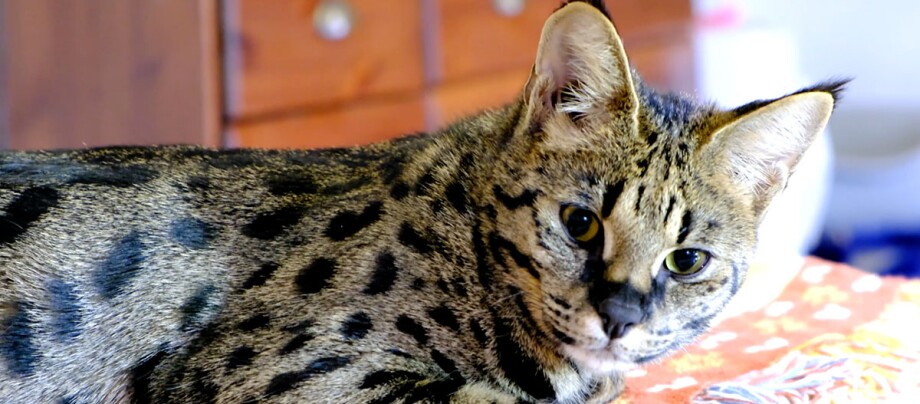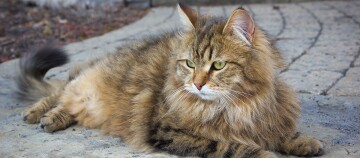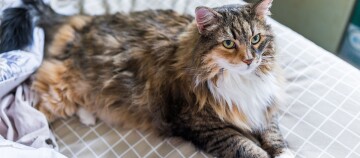Savannah Cat – Strong Play Instinct and Quick Ability to Learn
01.01.2024 - Reading time: 3 minutes

Completely exotic: The Savannah cat is a cross between the Serval and a domestic cat (preferably Egyptian Mau, Ocicat or Oriental Shorthair). As a result of this crossbreeding, it has the hunting instinct and urge to move of a wild cat, but at the same time it is as affectionate and loving as a domestic cat.
NewsletterSavannah-cat
Breed | Savannah-cat
|
Origin | USA |
Size | up to 45 cm height and 120 cm long
|
Weight | 8 kg (female), 10 kg (male)
|
Eyes | Yellow-green
|
Hair | short |
Colour | Brown-beige with dark spots and stripes
|
Nature | very playful, intelligent, active
|
Owning | House cat with controlled access to the outdoors (or in an enclosure), not an outdoor cat |
Origin and breeding of the Savannah cat
The first Savannah cat appeared in 1980 with the crossbreeding of a Serval and a Siamese cat. This was very complicated, when you consider the size difference in both animals, which is why it took a few years until this little wild one enjoyed greater popularity in the USA and Canada. Although initially only Servals were bred with house cats in order to obtain the first generation of Savannah cats, since 2007 it has been possible to breed Savannah cats with each other. This is possible starting from the fourth descendant generation because the Savannah cat was generally sterile until the third filial generation. The descendant generation is generally distinguished by appearance, behaviour and the price for the animal: the closer the animal is to the parental generation, the stronger the visual and behavioural similarities with the wild Serval – and that frequently has its price. For this reason, a Savannah cat from the F1 generation in which the breed-typical features are especially distinct can cost up to EUR 10,000. Also: Savannah cats are not permitted to enter Australia and New Zealand.
How to recognize the Savannah cat
The Savannah cat has a beige-brown coat that is covered with black dots and stripes. The area around the mouth, chest and stomach can also be a lighter colour. The tail is short, thin and dark striped. The body of the Savannah cat is long, muscular and generally slender. It rests on long legs that have a great deal of jumping power – the Savannah cat can jump up to 2 metres from a standing position! The ears sit high on the head and are relatively large in comparison with the head. An adult Savannah cat can reach a size of up to 45 cm and a length of up to 120 cm, so it is considered one of the largest house cat breeds in the world.

Small exotic with the big heart: keeping and character
You inevitably notice it in their wild origin: the Savannah cat needs a great deal of movement and intellectual challenges. For this reason it cannot be kept purely as a house cat. In Germany, animals in the F1 to F4 generation must be registered. Animals in the F1 generation are forbidden from free access to the outdoors because they have a strong hunting instinct and native wildlife should be protected. Otherwise, authorities check to ensure there is sufficient outdoor access, for example in an enclosure, as well as a heated interior space in order to ensure species-appropriate keeping for the Savannah cat. They are also demanding in terms of feed: they require a great deal of fresh meat (BARF) on the menu in order to provide the small hunter with optimal nutrients.
Temperamentally, the Savannah cats delight with their strong play instinct, cheerful disposition and quick ability to learn. Little tricks and creative games with tasty treats are the right way to keep the Savannah cat on its toes physically and mentally.





